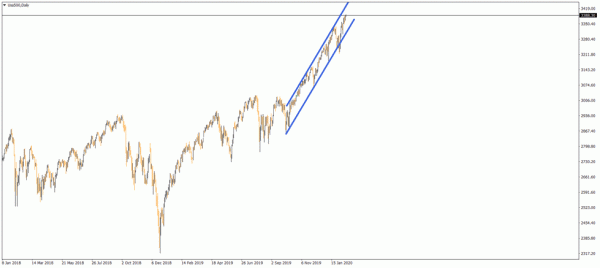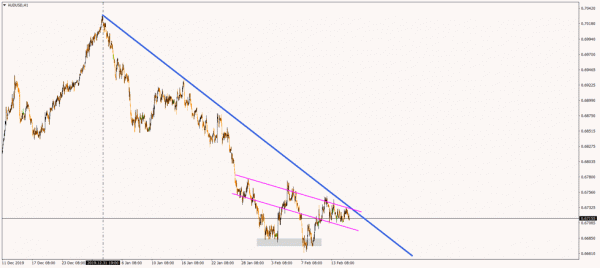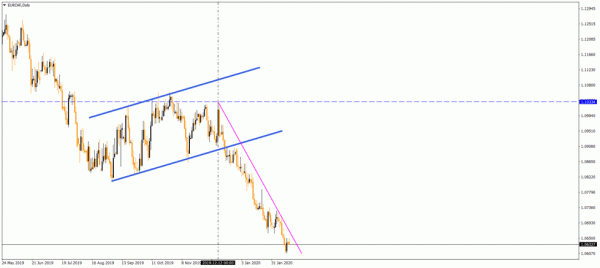The new decade started with an unexpected global problem – the coronavirus. Late 2019 saw the first cases in China, and the authorities quickly locked down cities with millions of people. Wuhan, a major Chinese city, became known as the birthplace of this virus that quickly spread across the region.
What seemed like a regional threat, it quickly became a worldwide one. Despite the fact that most cases are in Asia, China, in particular, international world travel, made it possible to see cases on other continents as well.
The world suddenly realized that it has a major problem on its hands and needs to deal with it as quickly as possible. A race against the clock began as the World Health Organization (WHO) unites the nations to react as efficiently to the coronavirus’ threat as possible.
It has rarely been the case that the world must unite to find a solution to a common problem. Even climate change is not enough to bring nations together – while everyone agrees on the impact, the disagreement continues on the solutions to tackle the problem.
Finding a better solution to known problems is one thing. But finding a solution to an unknown problem is different.
All parameters involved are different. Humankind is bound to act by rules that enhance civilization, well-being, and trust.
However, when faced with a universal problem like a new virus, geographical barriers do not exist anymore, and solidarity prevails. After all, we’re all in it as there’s no planet b.
What Is the Coronavirus?
The truth is that no one really knows. The world speculates about its transmission or how to protect ourselves. However, the threat goes beyond what we know so far, and many are scared.
But if there’s one thing to be grateful, it is that we live in the 21st century. Research labs from around the world have a top priority in finding a solution to this problem.
Some specialists work on the transmission mechanism, some others on the symptoms, and other ones look for innovative methods to combat coronavirus (e.g., using plasma cells from people that got well and treating others in Intensive Care Units – ICU with great success). All in all, the world is on high alert to contain the spread of it, and it uses all of its resources – material and intellectual.
This is a new virus that took everyone by surprise. It resembles pneumonia, but it impacts people in a more intensive way. Some say that it looks like double pneumonia if we can use that term. Hygiene is mandatory to prevent its spread, albeit anyone in a one-meter radius distance from an infected person can catch it easily.
Yet, the world keeps spinning, and the markets open every Monday, regardless of what’s happening in the world. Truth be told, there’s always something to worry about, from the next Presidential election in the United States, the North Korean missiles, the US protectionism or the Middle-East tensions, to the Australian and Brazilian wildfires. This is the reality we’re living in, and, as investors, we must look at the entire picture with objective eyes.
What to Do as a Trader/Investor?
Financial markets are the first ones to react to anything. Elections, referendums, natural calamities – they all affect prices.
Markets may be closed over the weekend (e.g., the currency market), but that doesn’t mean events won’t affect prices. In fact, we may say the markets are always open because the prices trades see at the Monday’s opening always reflect the events over the weekend too.
The Internet changed the way investors approach financial markets. It made it possible for traders to react quicker to news, to build complex trading algorithms as well as to speculate on arbitrage techniques on different markets.
To be more precise, correlations between various financial products are the base for incredible arbitrage-based trading strategies. It means that one move in one market automatically implies a similar move in another market, and the prepared trader may benefit from rightly interpreting it.
As always, there’s no straight line to approach this. Correlations often change, as well as the impact of a market over another.
What is sure is that the 21st-century trader stands a better chance to profit from the market moves if there is a clear understanding of what the implications of one market over another are. For instance, traditional safe-haven assets aren’t what they used to be anymore – gold, bonds, replaced by Bitcoin.
Aspects of trading/investing common a few years ago, suddenly aren’t valid in today’s reality. The coronavirus outbreak is just a reminder that the world is changing, and investors/traders must have a different approach in their aim for higher yields.
How Did the Coronavirus Affect the Financial Markets?
When something unknown and unpredictable surfaces, the word’s financial markets are the first to react. The worse the news, the worse the markets’ reaction.
Up until now, the reaction to negative news was known as a risk-off approach. Under such an approach, some currencies viewed as safe-have appreciate, while others lose value. It is typical that the Swiss Franc (CHF) and the Japanese Yen (JPY) rise as investors flee the stock market.
The phenomena is based on how the US investors and the US stock market reacts. Because the rest of the world equities follow the Dow Jones Industrial Average (DJIA) and the S&P500, their reaction to risk events is a guidance of the importance of such events.
In Japan, Bank of Japan (BOJ) keeps the interest rates into negative territory since more than a decade. Even before negative interest rates became a reality, the interest rate on JPY was one of the lowest in the world.
As such, investors willing to take a risk on the US stock market, borrow money to buy stocks. More precisely, investors borrow in JPY due to the low interest, change the JPY for USD, and then buy stocks.
As a consequence, the USDJPY pair rises and the US stocks too. This explains one of the oldest correlations that exist in the world financial markets – the one between the US stock market and the USDJPY.
On a risk-off move, the process mentioned above, reverses. Investors sell the stocks previously bought with borrowed money and repay the JPY loan. For this, they exchange the USD into JPY, causing the USDJPY to decline.
US Stock Markets At All-Time Highs
But this time is different. Clearly, the coronavirus ignited fears of how much the Chinese economy will slow down. Or how it will affect the entire region.
China is the world’s manufacturer, and its growth dictates the state of the world economy. There is a saying that when China sneezes, the world gets a cold – reflecting the importance of the Chinese economy and its impact on other countries.
This time the US stock market didn’t react as many expected. The risk-off environment didn’t materialize as the USDJPY remains close to the 110 level and DJIA at or near all-time highs. Investors seem to believe that Asia has the power to contain the virus and aren’t willing to pull-off the funds just yet.
The S&P500 chart clearly shows the mood of international investors. Despite being a US index, the S&P500 chart reflects the international investing sentiment as funds from all over the world have exposure to the US stock market.
Since middle-2019, when the Fed in the United States reversed the tightening cycle, the stock market began to rise. Nothing stopped the rise – and it seems like the new coronavirus won’t do it either. The world’s central banks are deep into easing because inflation simply doesn’t show in major economies.
From a technical perspective, the rising channel respects the rules of a bullish trend – higher highs and higher lows. The break of the lower edge of the channel is only arbitrary, as what truly matters is the ability of price to break the previous higher low. Even that, if not coupled with future lower lows, it means nothing as the market tends to reverse for a new higher high, as it did so often in the last years.
In other words, with all the gloom and doom about the virus and its side effects, financial markets hold up pretty well, albeit with central banks’ help. However, central banks have been there every time in the last crises, and the price reflected recessionary conditions.
This time, judging by how the stock market acts, the world is sure that a cure/solution to contain the virus will be found just in time, as it was the case with the previous SARS, for example
The US Presidential Election
For many investors the current market stance simply doesn’t make sense. How is it even possible to consider higher equities with the coronavirus shutting down China?
The answer lies in a world that keeps looking at the bigger picture and considers cases like the coronavirus as isolated when compared with the real target – rightly positioning for the US Presidential election. Many traders/investors focus on the short to medium term horizon for their trades, but the high stakes are on the US Presidential election race.
Republicans and Democrats once again set the stage for a tough battle. From an economic point of view, no one can argue with Trump’s accomplishments – record-low unemployment rate, no inflation, strongest economy in years.
On the other hand, protectionism and isolationism never ended up being positive for a country in the long run. Therefore, the Democrats try to bring the best they have to, and the race within their own party is open. Michael Bloomberg may be a strong opponent to Trump – but that’s for late in the year, not here, not now.
However, this is where the markets’ focus is, and it should be clear to any investor that ignoring the US Presidential election comes at a high risk. The coronavirus may hold the headlines for now, but unless a major outbreak becomes a reality, the markets will simply ignore it for the long-run goal.
Economic shocks continue to hit the wires. The Eurozone economy barely grows at 0.1% – if we can call that a growth. Japan stunned the world this week with a horrible Gross Domestic Product (GDP) print – it fell 6.3% QoQ in a blow to the accommodative monetary policy running in Japan for so many years.
The Australian Dollar – Collateral Damage
One of the currencies most affected by the coronavirus is the Australian Dollar. It is no wonder if we think of the strong ties between the Australian economy and the Chinese one.
Australian exports to China account for about thirty percent, and it imports roughly the same. It means the two economies depend on each other, and a slowdown in China will have a strong impact on the Australian economy as well. Moreover, the weakening of the Australian economy should first be seen in its currency, the AUD.
The coronavirus effect on the FX market is best seen on the AUDUSD chart. Literally, it dropped from the moment 2020 started. Let us all remember that the first coronavirus cases appeared late last year, and in December most of the institutional traders have the second half of the month off.
Therefore, by the time January 2020 started and traders came back to their desks, the AUDUSD pair began to slide and never stopped since. In a way, it reflects the interest rate differential between the Fed and the RBA – despite the recent cuts, the federal funds rate is way above the RBA’s cash rate, a positive for the USD.
With the interest rate differential in favor of the USD, there is little hope for AUD bulls from a fundamental point of view. However, the technical picture looks like bulls watching for a possible reversal pattern forming on the hourly chart.
It seems like an inversed head and shoulders with the head putting a double bottom as well. The current consolidation, while below the pattern’s neckline, looks like building energy for breaking above the main bearish trendline. If the AUDUSD manages to reverse from current levels and push above the trendline that defined its 2020 move so far, it may signal that the worse is over in the region.
SNB and the CHF
Perhaps the most important pair reflecting the flight to safety is the EURCHF. Many investors forgot about it since the SNB dropped the 1.20 floor in January 2015. But the pair recent bearish trend shows where the flows are going when it comes to investment in the region.
The Swiss National Bank (SNB) already charge a negative interest rate. To divert flows into the CHF, the SNB dropped the interest rate to -0.75% for many years now. Yet, the CHF continues to rise, and the SNB interventions don’t seem to be enough to keep it from rising.
In Switzerland, a maximum of 2% of GDP is allowed to intervene in the FX market, and the SNB is under threat to breach the threshold. For the bearish trend in the EURCHF to end, either the ECB turns hawkish, which is unlikely given the coronavirus threats for the global economy or the SNB cuts rates some more.
Last time when the SNB was forced to cut rates it was when it let the EURCHF free-floating again. It took massive losses as the ECB needed to cut rates as well. This time may be no different as the two central banks face similar economic conditions – slow growth, lack of inflation, and resilient economic growth.
Conclusion
In a world flooded with cheap money, the virus re-ignited bets of even more cuts and easing from the worlds’ central banks. The pressure mounts on all continents for more to be done in terms of how monetary policy will cope with a recession sparked by the coronavirus.
The Fed in the United States continues to buy T-Bills at a pace of $60 billion per month. If the stock market reverses its course before the US Presidential elections, expect the White House to put pressure on the Fed to do some more.
In Asia, the People’s Bank of China (PBOC) is under renewed easing pressure. Considering that investors do not know the true impact of the coronavirus on the Chinese and global economy, it is likely that the PBOC will act sooner rather than later.
To sum up, all the worries with the impact the virus has on the global economy reflect the interdependency of the world’s economies. We can’t say anymore that this is a local problem like in the past, as Asia plays a crucial role in global growth.
The horrible Japanese GDP in the last quarter of 2019 speaks of how difficult is to generate growth and fight deflation in the 21st century. For an economy like Japan, such a contraction threatens to spill over to neighborhood economies. On top of it, the Olympic Games are under threat if the health authorities in China and across the region won’t manage to contain the coronavirus outbreak.

















